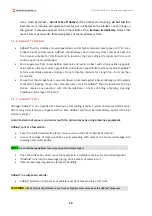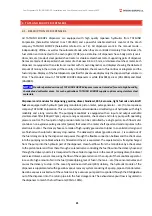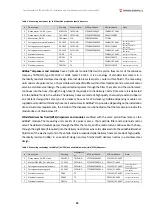
TATSUNO
EUROPE
a.s.,
www.tatsuno
‐
europe.com
12
Table
1
‐
Physical
properties
of
main
components
of
an
LPG
mixture
Physical
properties
of
a
liquid
state
propane
butane
formula
C
3
H
8
C
4
H
10
molecular
weight
44.09
58.12
boiling
temperature
(°C)
‐
42.6
‐
0.6
density
(kg/m
3
at
20°C)
502
579
Physical
properties
of
a
gaseous
state
density
(kg/m
3
at
atmospheric
pressure)
1.865
2.76
density
(air
=
1)
1.562
2.091
calorific
value
(MJ/m
3
at
0
°C
and
atmosp.
pressure)
93.57
123.76
Explosive
limit
in
air
mixture
in
a
%
volume
lower
1.7
1.3
upper
10.9
9.3
Ignition
temperature
in
°C
465
365
Physical
properties
of
an
LPG
mixture
are
within
the
properties
of
individual
components.
Liquid
LPG
has
similar
properties
as
gasoline,
it
means
that
it
dissolves
and
dries
out
sealing
made
of
natural
rubber,
organic
lubricants,
varnish,
and
other
similar
materials.
On
the
contrary
to
this,
synthetic
rubber,
graphite
sealing,
Teflon,
etc.
are
resistant
to
LPG
effects.
A
Teflon
tape
or
LOCTITE
are
used
to
seal
threaded
connections
for
liquefied
and
gaseous
LPG.
The
use
of
alcohol
sealants
or
sealants
made
of
lampblack
(HERMETIC,
HERMOSAL)
results
in
difficulties
in
disassembling
such
sealed
connections.
Teflon
sealing
rings
or
sealing
rings
made
of
klingerite
suitable
for
LPG
are
used
at
flange
connections.
Gaseous
LPG
influences
human
organism
as
a
slight
narcotic.
Inhalation
of
gaseous
LPG
for
a
certain
time
causes
headache,
nausea,
faintness,
reduction
of
vigilance,
and
drowsiness.
If
no
fire
and
burning
of
an
affected
person
occurs,
gaseous
LPG
may
cause
suffocation
of
workers
even
if
it
is
not
directly
poisonous
such
as
coal
gas.
Since
it
is
heavier
than
air,
it
accumulates
at
the
ground
and
in
recesses
and
an
unconscious
lying
person
(injured,
etc.)
may
be
in
an
unbreathable
atmosphere.
Gaseous
LPG
also
causes
skin
degreasing.
Liquefied
LPG
under
a
rapid
decrease
of
overpressure
to
atmospheric
pressure
(e.g.
emission
of
liquefied
LPG
from
equipment)
evaporates
by
boiling
at
‐
42
°C.
Therefore,
frostbites
may
occur
after
contact
of
liquefied
LPG
with
skin.
1.3.3.
ADBLUE®
CHARACTERISTICS
AUS
32
reagent
intended
for
reduction
of
NOx
content
in
fumes,
also
known
under
a
commercial
name
of
AdBlue®,
is
a
32.5%
solution
of
urea,
water,
and
other
admixtures.
This
solution
was
selected
because
it
has
the
lowest
crystallization
temperature.
To
ensure
proper
activity
of
the
SCR
system
during
its
life,
the
quality
of
AdBlue®
must
be
strictly
checked.
Therefore,
it
is
specified
in
DIN
70070
and
ISO
22241
standards.
Some
important
physical
properties
of
AdBlue®:
AdBlue®
freezes
at
‐
11
°C
AdBlue®
is
highly
corrosive
because
67.5
%
of
it
is
formed
by
water
AdBlue®
shows
strong
crystallization
and
deformation
effects
Содержание OCEAN TOWER Series
Страница 99: ...Fuel Dispensers TATSUNO EUROPE Installation and User Manual revision 10 January 2022 99...
Страница 171: ...Fuel Dispensers TATSUNO EUROPE Installation and User Manual revision 10 January 2022 171 NOT...
Страница 172: ......
Страница 173: ......













































